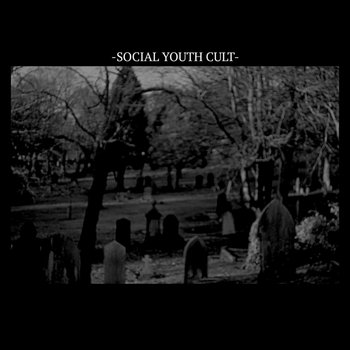Surgida das sombras industriais de Newcastle-upon-Tyne, a Social Youth Cult representa a nova geração do pós-punk britânico que não teme o confronto entre o ritual e o ruído. Formada há pouco menos de dois anos, a banda vem se firmando como uma das forças mais intensas e autênticas do cenário gótico e underground do norte da Inglaterra. O line-up da banda é formada por Shaun Greer (vocal) e (guitarra), Holly Moore (guitarra), Alex Thibaut (bateria e vocais secundários) e Jack Stephenson (baixo).
No início, o grupo flertava com sonoridades mais darkwave, mas rapidamente abandonou a pele inicial para revelar algo mais denso e instintivo. Hoje, o som da SYC é marcado por uma energia percussiva e atmosferas carregadas, evocando a urgência ritualística do Killing Joke, o experimentalismo das primeiras bandas do pós-punk do norte inglês e a crueza de nomes como Bauhaus e The Pop Group. O resultado é um som que resiste à categorização: atmosférico e direto, sombrio e político, gótico e Gang of Four ao mesmo tempo.
Com apresentações intensas e um público em expansão, a Social Youth Cult já tocou para plateias esgotadas em diversas cidades do Reino Unido, incluindo um show recente ao lado do Vision Video em Newcastle, consolidando sua reputação como uma das bandas mais vibrantes da cena contemporânea.
O aguardado álbum de estreia, The Lighthouse, foi gravado no lendário The Bunker, em Sunderland, e reúne oito faixas que exploram os limites entre o transe e a desordem. O disco será lançado em 2 de novembro de 2025, antecedido pelo single “Close to Nothing”, que chega às plataformas digitais em 18 de outubro. Além das versões em streaming, o lançamento contará com edições em CD e fita cassete, seguidas por uma tiragem limitada em vinil LP.
A Social Youth Cult fará o show de lançamento durante o Whitby Goth Weekend, um dos eventos mais emblemáticos da cultura gótica britânica, no dia 2 de novembro, no Crafty Cove. O grupo encerra o ano em plena ascensão, com novas datas ao vivo e a certeza de que seu culto apenas começou.

Emerging from the industrial shadows of Newcastle-upon-Tyne, Social Youth Cult represents the new generation of British post-punk, unafraid of the clash between ritual and noise. Formed just under two years ago, the band has been establishing itself as one of the most intense and authentic forces in the gothic and underground scene of Northern England. The band's lineup consists of Shaun Greer (vocals and guitar), Holly Moore (guitar), Alex Thibaut (drums and backing vocals), and Jack Stephenson (bass).
In the beginning, the group flirted with more darkwave sounds, but quickly shed its initial skin to reveal something denser and more instinctive. Today, SYC's sound is marked by a percussive energy and charged atmospheres, evoking the ritualistic urgency of Killing Joke, the experimentation of the early North English post-punk bands, and the rawness of names like Bauhaus and The Pop Group. The result is a sound that resists categorization: atmospheric and direct, dark and political, gothic and Gang of Four at the same time.
With intense performances and an expanding fanbase, Social Youth Cult has already played to sold-out crowds in various cities across the UK, including a recent show alongside Vision Video in Newcastle, solidifying its reputation as one of the most vibrant bands in the contemporary scene.
The highly anticipated debut album, The Lighthouse, was recorded at the legendary The Bunker in Sunderland, and features eight tracks that explore the boundaries between trance and disorder. The album will be released on November 2, 2025, preceded by the single “Close to Nothing”, which will hit digital platforms on October 18. In addition to streaming versions, the release will include CD and cassette editions, followed by a limited vinyl LP press.
Social Youth Cult will launch the album during Whitby Goth Weekend, one of the most iconic events in British gothic culture, on November 2, at Crafty Cove. The band will close the year on a high, with new live dates and the certainty that their cult has only just begun.



















